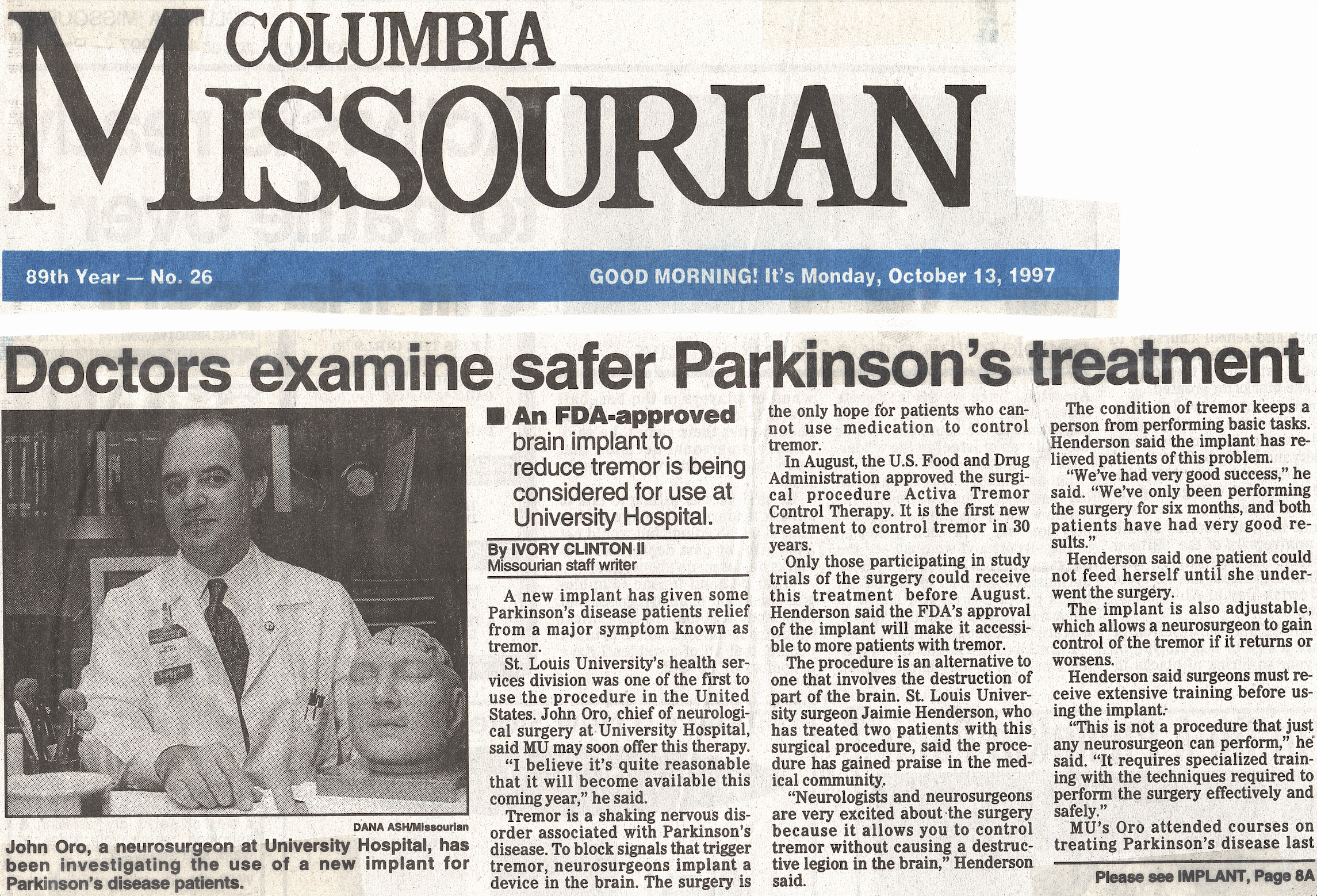On becoming Acting Chief of Neurosurgery in January 1988 and Chief in July 1990, I focused on the development of subspecialty programs. Among the first was the Functional Stereotactic Surgery program.
Patient with stereotactic head frame in position in the operating room.
With the support of the Department of Surgery, the Division purchased a Brown-Roberts-Wells Stereotactic Frame that allowed precise targeting for biopsies of deep brain lesions and the placement of electric probes for the treatment of Parkinson’s tremor via Deep Brain Stimulation (DBS).
A CT scan of the brain with the head frame in place and the thalamic target marked.
An 80-year-old man who presented with severe tremors. Marked shaking of his hands and arms made eating a struggle. Given the severe impact on the quality of his life, I offered stereotactic surgery to implant a probe into the parafascicular thalamus, the source of the tremors.
After local anesthesia was infiltrated at four points of his scalp, a stereotactic was attached to his skull (image above) and this CT scan was obtained, the cross-hatch marking the target point. He was transported to the operating room and sedated.
With the coordinates to the target area set on the frame, a small scalp incision was created at the access point, followed by a small burr hole in the skull.
The lesioning probe was then advanced into the thalamus. Once the sedation wore off, the patient was asked to perform a few activities with his right arm and hand. The first was to bring a cup to his mouth. Without stimulation, his hand jerked wildly. With stimulation, he could reach his mouth well.
He was then asked to draw a straight line on a piece of paper supported on a clipboard. The tremor was markedly noticeable without stimulation (top image), resulting in this markedly irregular line. The image below was obtained with stimulation turned on, showing marked improvement in the line he drew. The second line shows further improvement.
He was then asked to write his name. The top illegible image shows his signature without stimulation. The bottom image during stimulation allows recognition of his first name. (His last name is blocked for privacy.)
With good positioning of the deep brain electrode, he was again sedated to allow the creation of a subcutaneous tunnel from the scalp incision, down under the skin on the right side of the neck to just above the clavicle where the stimulator battery was implanted in the subcutaneous tissue just above the clavicle.






